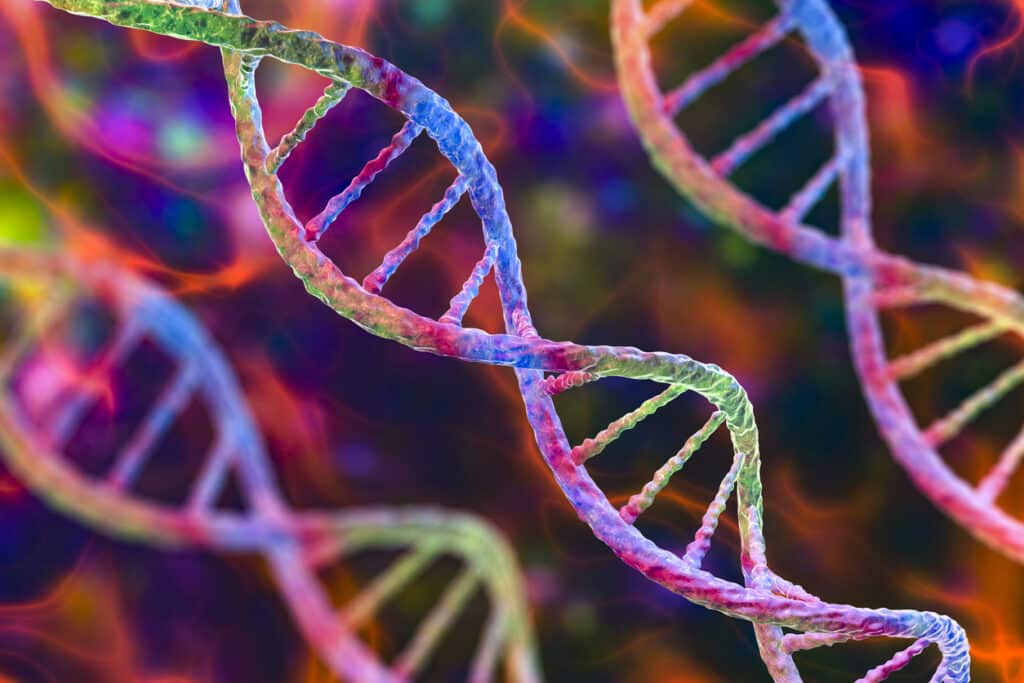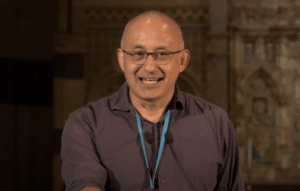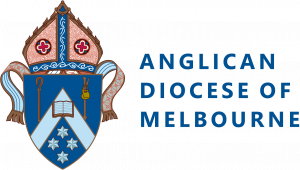
Victoria Lorrimar
26 April 2024
In this article, Victoria Lorrimar, a fellow of ISCAST – “Science and Faith in Conversation,” has some surprising news: science’s own view of evolution is changing. Christians need to keep up with these recent developments if we are to engage intelligently in the science-faith space.
Hear the term “evolution” and there is a good chance you will think of Charles Darwin, who in the 19th century proposed the now widely accepted claim that all biological life evolved from a single common ancestor. According to Darwin, evolution occurs by a process of natural selection. That is, genetic mutations which produce physiological changes that advantage an individual’s survival increase in a population over time, due to the greater reproductive success of those with the mutation. The theory of natural selection revolutionised scientific understanding. But its appropriation in non-scientific contexts has led to deeply troubling developments such as the eugenics movement.
For a Christian faith, there are challenges too. The theory of evolution by natural selection emphasises randomness and a lack of foresight, and frames all living things as fundamentally competitive with one another. For some (though by no means all) Christians, the randomness of natural selection cannot be reconciled with a God who creates lovingly and intentionally, and providentially sustains that creation. Furthermore, the long timescale of Darwin’s evolution and the geological record do not accord with an interpretation of the Scriptures that sees Genesis 1 as a chronologically precise recounting of the earth’s beginning.
Read more: Valuable text supports value of science within Christian framework
For others, these tensions do not present insurmountable differences. Even so, pressure points remain between theological commitments and insights from evolutionary sciences. For example, how do we think about sin, and the emergence of moral culpability, in an evolutionary context? Or how do we make sense of the violence inherent in the natural world, that nature is “red in tooth and claw” as Tennyson put it? Or, if there is an element of randomness, blindness even, to evolution, then how do we understand the agency of God as creator and sustainer of all things?
I don’t have the answers to all these questions, but they are worth wrestling with. Importantly, scientific understandings of evolution have themselves evolved, making recent trajectories in evolutionary theory ripe for theological reflection. In what follows, I will outline the Extended Evolutionary Synthesis and indicate a few areas in which engaging with the EES might expand our theological horizons1.
The Extended Evolutionary Synthesis is so named because it extends (or in some places challenges) the “modern synthesis” – the traditional understanding of evolution that combined Darwin’s ideas of natural selection with Gregor Mendel’s discovery of genetic heredity. The EES draws on insights from newer fields such as evolutionary developmental biology and molecular genetics. It expands the modern synthesis by including aspects such as:
- Multiple levels of selection. While the modern synthesis understood natural selection to occur solely at the level of individual genes, the EES acknowledges that selection can occur at organism and group levels as well.
- Epigenetics. Epigenetics studies heritable changes that are not actually encoded in an individual’s DNA. These include modifications to how genes are regulated, and explain how some characteristics relating to the way genes are expressed can be passed on from generation to generation even though the DNA itself is unaltered. The modern synthesis was only able to explain how genetic material was selected for and passed on to subsequent generations. Epigenetics has been gaining attention recently in relation to intergenerational transmission of trauma, for example, in relation to past famines.
- Niche construction. This occurs when an organism modifies its environment (that is, it constructs a niche) to influence its own evolutionary fitness in that environment. Beavers constructing dams, which then alter the ecological environment, is a classic example. The identification of niche construction moves away from the more passive understanding of organisms in the modern synthesis to framing them as having more agency in the evolutionary process.
Read more: Christians offered revamped world standard views on faith-science connections
The EES incorporates other new emphases in addition to these examples, and it is important to note that there is ongoing debate within the evolutionary sciences over the legitimacy and necessity of the EES compared with standard models of evolution. These debates notwithstanding, here are a few reasons why I think the EES is a helpful idea for theological reflection:
It acknowledges the significant role of culture in evolution. Particularly in the concept of niche construction, the agency of organisms for shaping the conditions of their biological evolution is attested. Through such mechanisms, culture can be a source of rapid biological evolution. Humans have constructed a rich cultural niche that includes science, technology, and art – as well as worldviews and religious beliefs. There are all kinds of interesting conversations underway about the evolutionary implications of religion that continue to advance science-faith dialogue.
It permits the language of purpose. Traditionally, the language of “teleology” (that is, goal-directed behaviour) was eschewed in evolutionary theory. The EES model is far less reticent, affording agency to organisms and acknowledging that teleology can exist within biological systems. Though this is not making any religious truth claims, it opens the door to dialogue with worldviews that look at the natural world and see order and purpose.
It moves us beyond a gene’s eye view of humanity. While the EES encompasses gene-centric evolutionary theory, it goes further. By looking at evolution at the level of organisms, rather than solely at the level of genes, ecological relationships are brought into the foreground. We now have models of evolution that can account for the interrelationships between species, which in turn allows us to re-imagine how we think of the human being from a theological perspective. For example, what does it mean to be human when our bodies contain many more cells belonging to other microorganisms (bacteria, fungi, etc.) than “human” cells? The EES invites us to contemplate reciprocity among the creation, and challenges historical understandings of human exceptionalism.
Of course, the path from these revisions in evolutionary thought to a Christian faith is a long and indirect one and I am certainly not recruiting the EES as fodder for apologetics.
But for those who seek to maintain the integrity of both science and faith and look at the created world through the lens of Alister McGrath’s “theology of nature”2 engaging with these more recent trajectories in evolutionary science may prove fruitful.
ISCAST fellow Victoria Lorrimar is a Research Fellow in the School of Philosophy and Theology, University of Notre Dame, Western Australia.
For more faith news, follow The Melbourne Anglican on Facebook, Instagram, or subscribe to our weekly emails.






